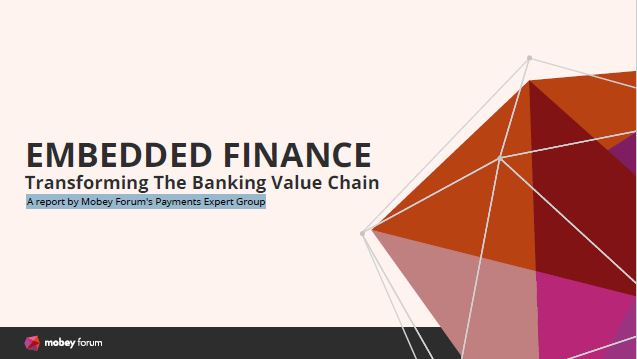Banking as a Service (BaaS) is the latest technology transforming the financial services industry, accelerating innovation and enhancing customer experiences.
How does BaaS work?
BaaS (Banking as a Service) can be viewed as a white-label banking infrastructure accessible via APIs, allowing non-banking companies to provide banking services, such as debit cards or payment services, without the need to develop a complete banking backend themselves.
For example:
- Mobile-only banks can provide savings products and personal loans
- Online retailers can offer financing options like Buy-Now-Pay-Later (BNPL)
- Utility providers can offer flexible billing options
BaaS is already proving effective. According to analysis by an Oliver Wyman, BaaS can reduce a traditional bank’s customer acquisition cost from $100-200 to just $5-35.
How does BaaS benefit banks?
Traditional banks are facing increasing competition from digital disruptors, who have been able to out-innovate them thanks to a lack of legacy systems slowing them down.
A study by Oliver Wyman found that a global bank with $300-400 billion in assets could earn $200-500 million in BaaS revenues within five years by partnering with just five major non-financial companies.
Faster innovation
It’s hard for banks to innovate when their business operates on legacy systems, complex organisational structures and strict regulatory requirements. And these challenges can result in long and expensive product development cycles that make it difficult to keep up with younger, more nimble competitors.
Banking as a Service (BaaS) acts as a catalyst for innovation for banks by enabling them to leverage third-party technologies and services, thereby accelerating the development of new products, enhancing customer experiences, and increasing operational efficiency without the need for extensive in-house development.
Better customer experiences
With 30% of customers thinking about switching banks and 42% have used Buy Now Pay Later (BNPL) services, according to research by Deloitte, there’s an evident customer desire for innovative financial solutions.
BaaS can enable banks to integrate their financial products directly into e-commerce platforms, allowing customers to access credit or instalment plans at the point of payment. And it can allow banks to offer a mobile wallet solution, which has become the payment method of choice for 21% of people in the UK in 2024.
Increased competitiveness
BaaS helps banks stay in the game without having to invest huge sums into developing and maintaining their own technology. For example, rather than spending resources developing a new mobile banking app from scratch internally, it could partner with a third-party BaaS provider that offers this service and integrate the solution more quickly and affordably.
Greater market reach
Growing an audience is expensive and takes time. But with BaaS, banks can reach new audiences more quickly and cost-effectively by partnering with companies that already have a large and engaged customer base. For example, a bank could partner with a large online retailer to offer embedded financing options at the checkout.
Executives are taking notice. According to a study by Galileo, 78% of C-suite bank leaders have made developing their BaaS capabilities a top priority.
What are the challenges of BaaS?
While BaaS offers numerous benefits, it also presents several challenges for banks to navigate. This includes ensuring data security with less experienced partners, overcoming legacy systems constraints, maintaining customer relationships and ensuring their brand isn’t eroded by outsourcing their customer touchpoints.
Data security and privacy
While traditional banks often have the resources and expertise in place to manage security and privacy concerns, their younger, less experienced partners may not.
It’s therefore of utmost importance that banks conduct thorough due diligence on potential partners to make sure they have robust security and privacy measures in place. Having clear contractual agreements that outline data sharing and protection responsibilities will also help mitigate potential risks.
Customer relationship ownership
While there are many benefits to providing financial services behind-the-scenes, it does mean that the end customer is less likely to interact with the bank directly. And this can lead to questions around who owns the customer relationship and how to maintain brand loyalty.
At the very least, banks should ensure that data-sharing agreements are made with partners so that they can gain valuable insights into customer behaviour. And as we explored in our article, AI Banking Chatbots can blend the SuperApps concept with data power to shape the future of digital banking, banks gain the ability to offer personalised experiences and proactive financial guidance via their mobile banking apps when AI is paired with big data.
Future of bank brands under threat?
Opening up the banking infrastructure via APIs to enable integrations with third-party platforms is often viewed as increasing competition from non-bank players offering banking services, potentially leading to the disintermediation of the bank's direct relationship with end customers.
It necessitates a shift in mindset from owning the entire banking value chain to focusing on specific aspects of it. By focusing on the ‘pipes’ rather than the ‘products’, banks risk becoming invisible to their end customers, potentially diminishing their hard-earned brand value. But this challenge also presents an opportunity for banks to reinvent themselves.
To address the risks while making the most of this opportunity, banks will need to focus on their brand and marketing strategies. This could include building strong brand-visible partnerships with the most relevant audiences.
Banks can also utilise their deep customer understanding and data to build an ecosystem of ‘super apps’ - partnering with a third-party BaaS provider to quickly and affordably integrate open and modular solutions that complement their existing services. This allows them to extend their reach without sacrificing their direct customer relationships.
As Bill Gates once said: “Banking is necessary, banks are not.” But this doesn’t mean that banks will disappear. Rather, it highlights the need for banks to evolve with technology, adapt to changing customer needs and keep up to date with changing industry dynamics.
Conclusion
Banking as a Service is powerful and allows banks to adapt to the evolving needs of customers, creating a more efficient and customer-centric banking ecosystem.
By leveraging BaaS, banks can remain competitive and relevant while avoiding becoming behind-the-scenes players in the financial industry.
To stay informed about the latest developments in digital banking and discover powerful modules that could supercharge your mobile app, sign up for our newsletter.
More stories
On this topic


